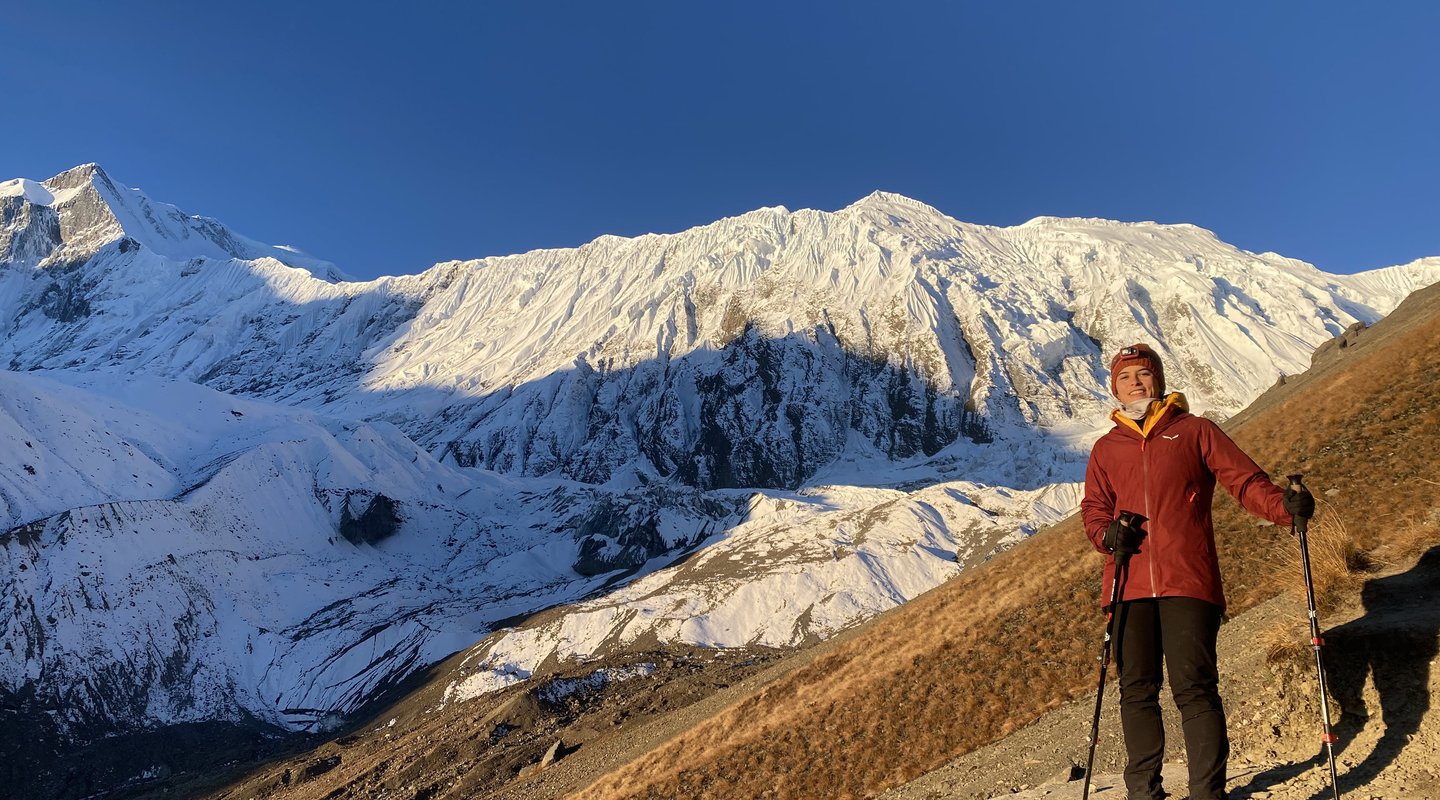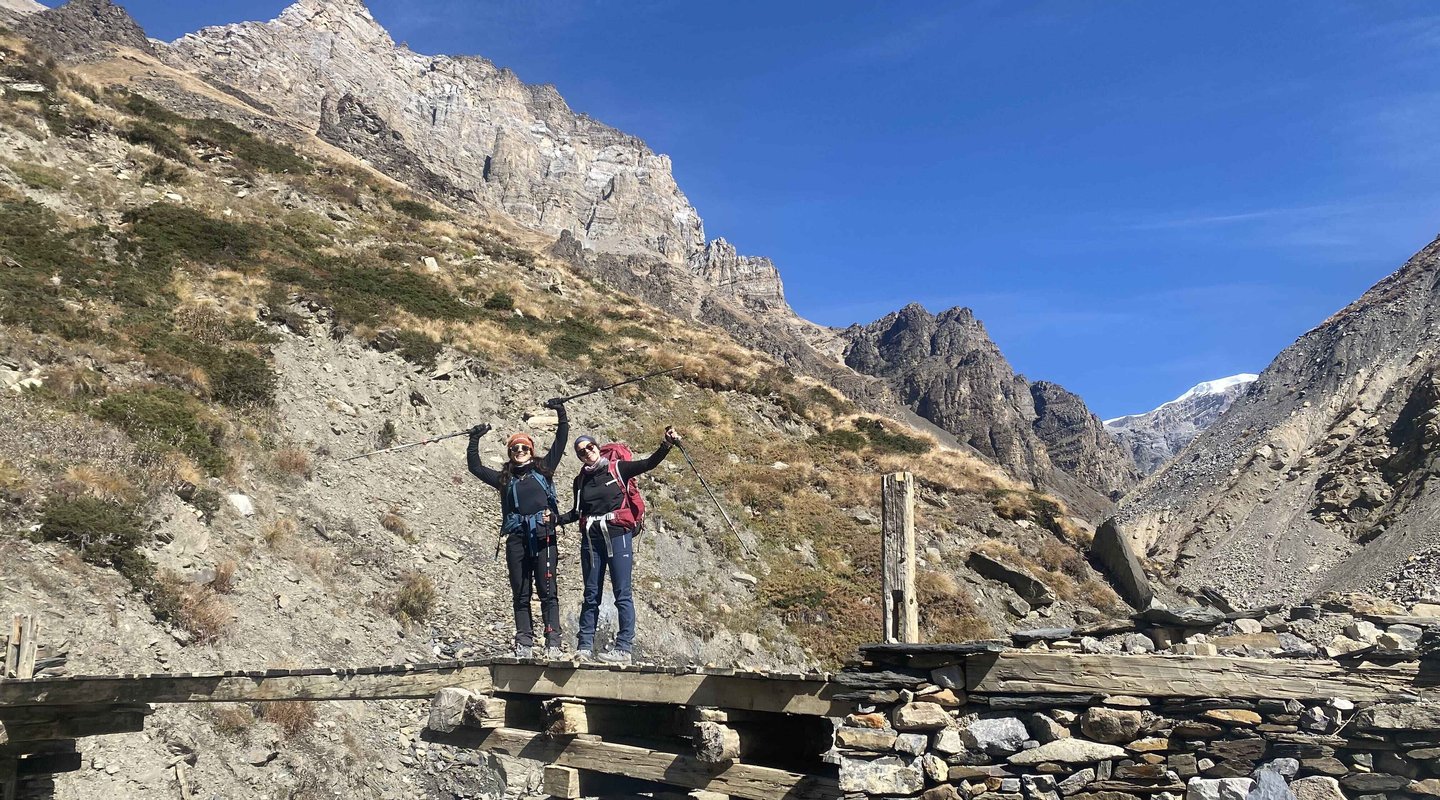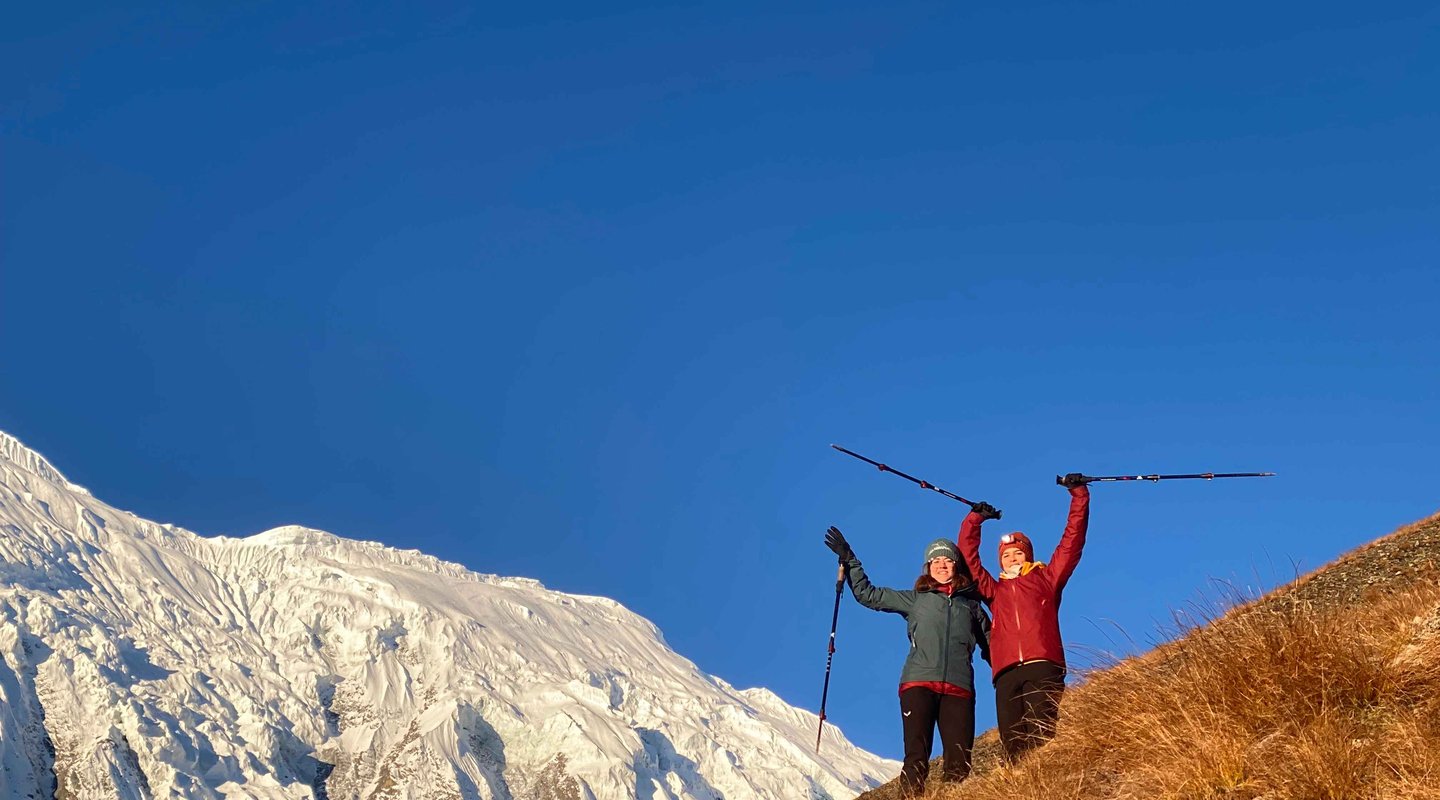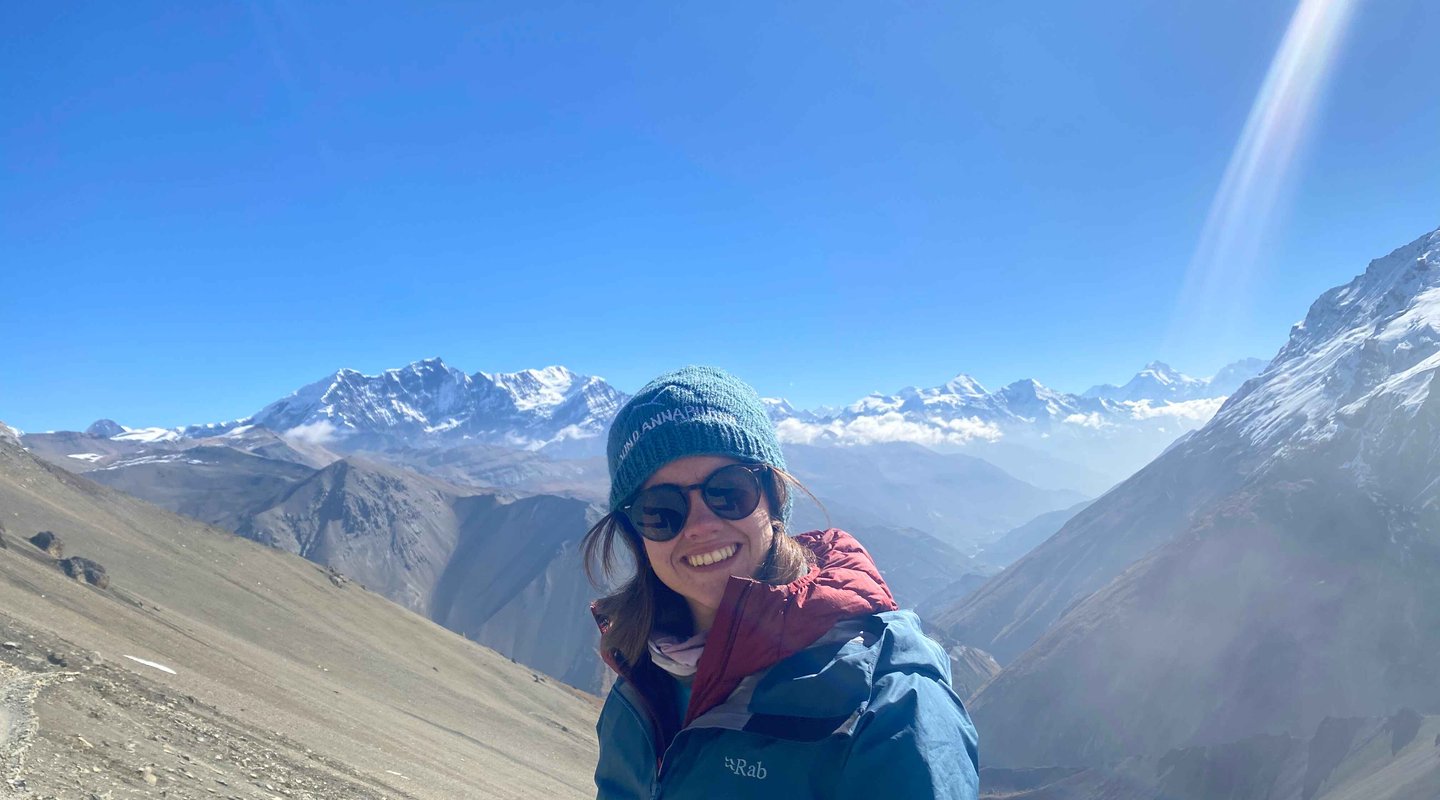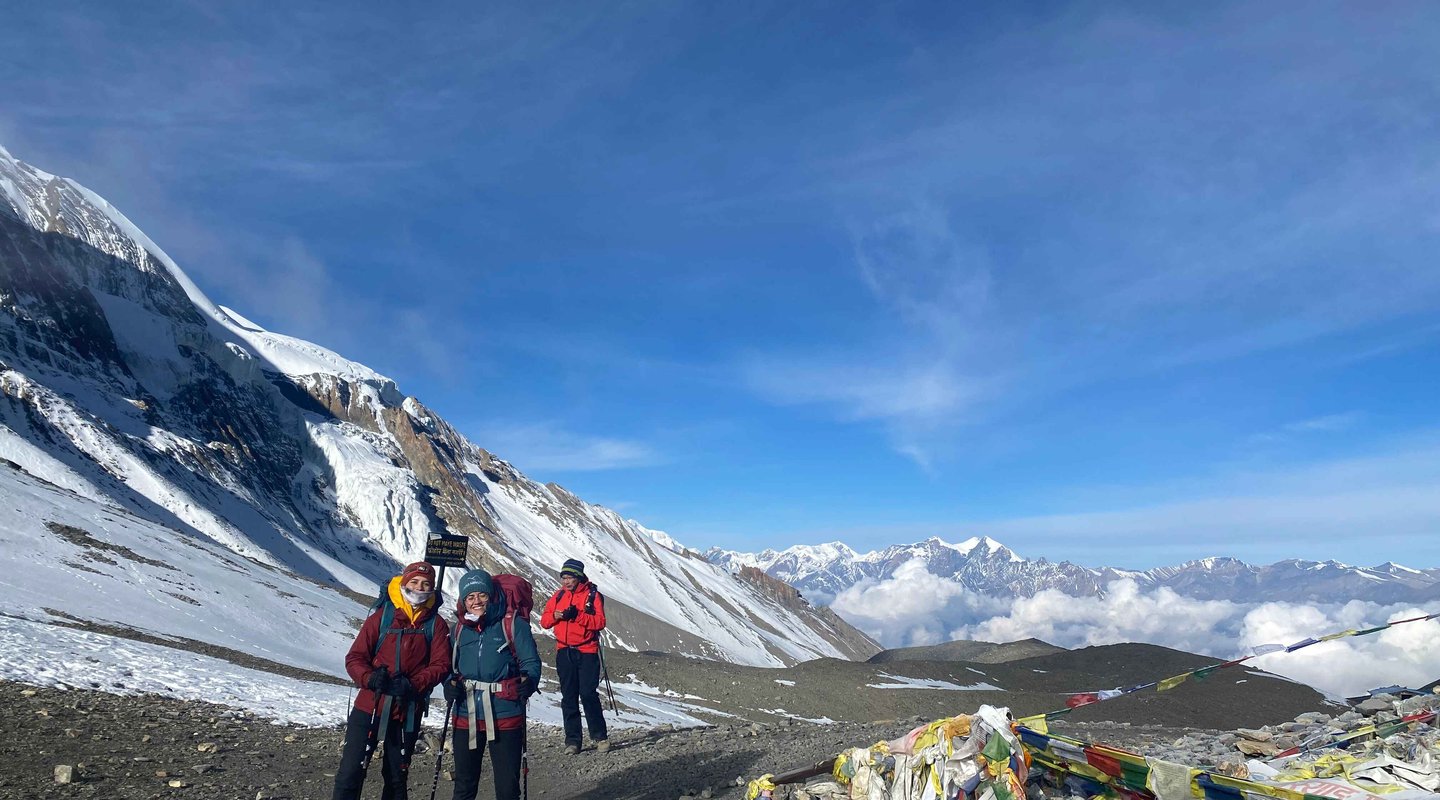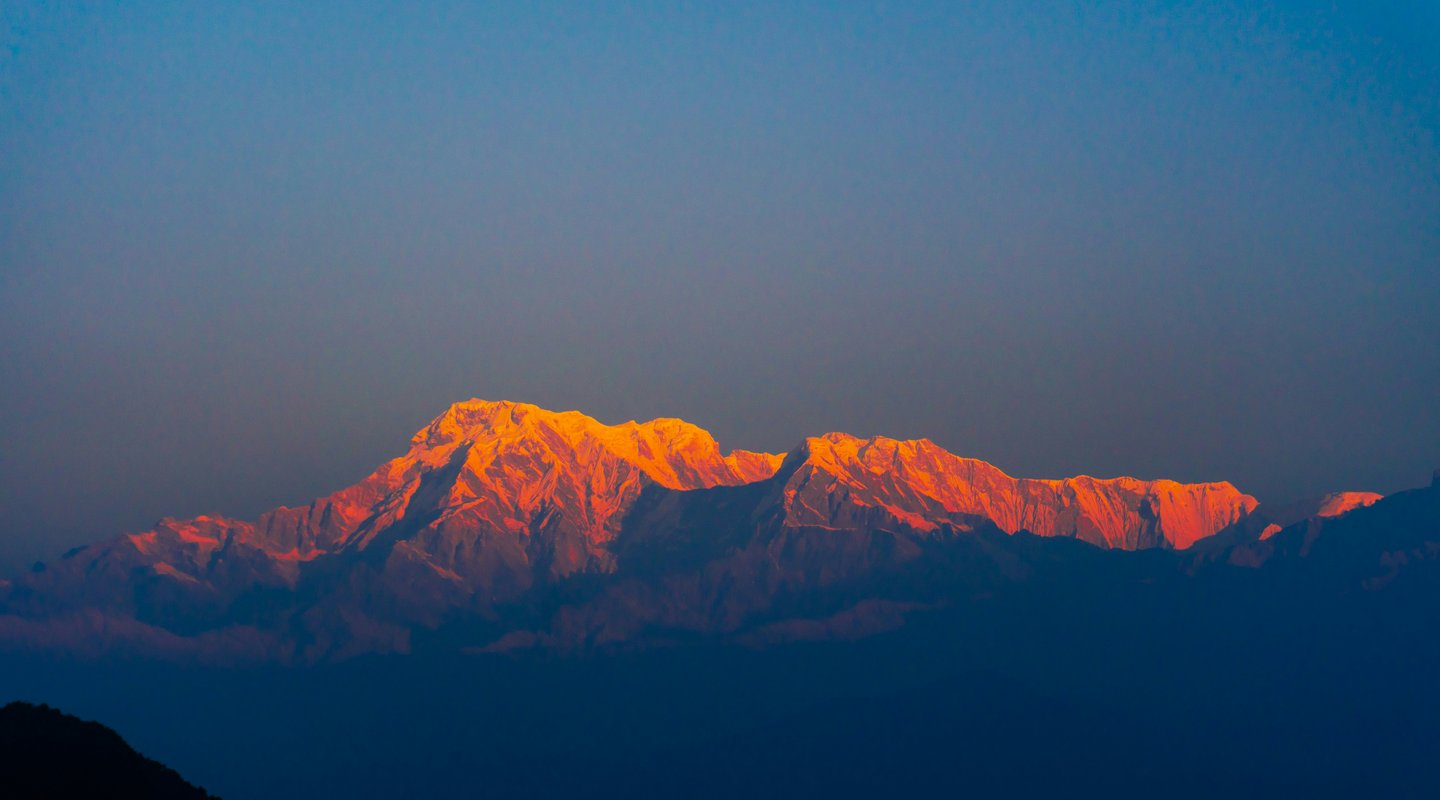
Sarangkot, perched majestically at an altitude of 1,592 meters (5,223 feet), stands as Pokhara's premier viewpoint, renowned globally for its breathtaking sunrise spectacles over the Himalayas. This high hilltop is consistently highlighted as a quintessential experience for anyone visiting Pokhara, promising a truly unforgettable visual and emotional journey. Its strategic location, a mere 5 kilometers from Lakeside Pokhara by road, ensures remarkable accessibility for travelers.
From this elevated vantage point, visitors are treated to an unparalleled panorama. The vista encompasses the majestic Annapurna mountain range, the formidable Dhaulagiri, and the distinctive silhouette of Machhapuchhre (Fishtail Peak). Below, the serene Phewa Lake shimmers, reflecting the surrounding peaks as the bustling Pokhara Valley gradually awakens to the dawn. The magic of Sarangkot extends beyond mere visual appeal; it is the profound sense of tranquility and peace that envelops observers as nature's artistry unfolds, creating a serene atmosphere that fosters a deep connection with the natural world.
Sarangkot's reputation for exceptional mountain views is not simply anecdotal; it is rooted in unique geographical and meteorological conditions. The viewpoint is situated at an altitude where morning thermal winds are minimal, ensuring remarkably stable viewing conditions during sunrise. Its elevation strategically places it above the morning fog that often blankets the Pokhara Valley, guaranteeing clearer sightlines. Furthermore, the hill's precise orientation allows observers to witness both the ethereal pre-dawn alpenglow and the full, dramatic sunrise effect on the mountains. This inherent advantage contributes significantly to the consistent quality of the views, distinguishing Sarangkot as a truly optimal location for capturing the Himalayan dawn. This natural phenomenon aligns with the broader vision of Pokhara as a smart city leveraging technological innovation for tourism enhancement and environmental sustainability.
Reaching Sarangkot for its renowned sunrise requires an early start, but the journey itself is an integral part of the adventure, offering various modes of transport to suit every traveler's preference and physical ability.
By Private Vehicle: The most common and convenient method is a scenic 40-45 minute private car ride from Pokhara, typically commencing around 4:30 AM to ensure arrival well before the 5:30 AM sunrise. This option allows for comfort and efficiency, enabling visitors to secure an optimal viewing spot amidst the gathering crowds.
By Hike: For those who prefer an active start, a hike from Pokhara to Sarangkot offers a rewarding experience. This easy to moderate trek generally takes 3-4 hours, covering a distance of 8-9 kilometers with an elevation gain of up to 1592 meters. The well-defined trails wind through charming villages, lush green fields, and serene forests, making it accessible even for beginners. Some routes, such as the Naudanda-Sarangkot Day Hike, provide additional cultural immersion by passing through traditional Nepali villages. A short 15-minute walk from the drive's drop-off point leads directly to the main viewpoint.
By Cable Car: A modern and increasingly popular alternative is the Annapurna Cable Car. This scenic ascent provides breathtaking panoramic views of Phewa Lake and the surrounding landscapes, offering a comfortable and hassle-free journey directly to the Sarangkot viewpoint. The introduction and operation of the Annapurna Cable Car represent a significant enhancement to Sarangkot's accessibility. This development transforms the journey from a potentially strenuous hike or a standard vehicle ride into a comfortable, scenic ascent, making the sunrise experience available to a much wider demographic, including families, elderly visitors, and those with limited mobility. This infrastructure improvement aligns with Pokhara's strategic goals for sustainable tourism and leveraging technological innovation for tourism enhancement.
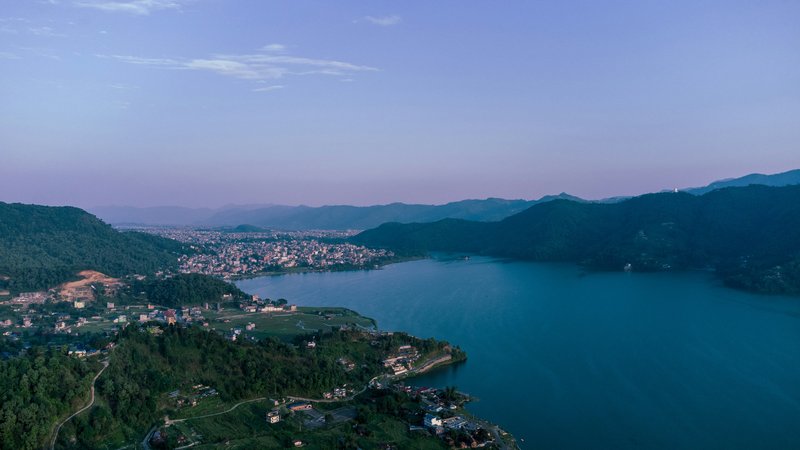
Optimal Seasons: The clearest skies and most stable weather conditions for witnessing the Sarangkot sunrise typically occur during autumn (September-November) and spring (March-May). These seasons offer mild temperatures and minimal cloud cover, ensuring unobstructed mountain views. Winter (December-February) can also provide stunning vistas, though it is considerably colder, and fog might occasionally obscure views, requiring some luck for a clear morning.
Daily Timing: To fully experience the magic, arriving early is paramount. The optimal time to depart from Pokhara is generally between 4:00 AM and 4:30 AM, aiming to reach the viewpoint by 5:30 AM, well before the sun crests the horizon. This early arrival allows ample time to find a good spot, set up, and soak in the ethereal pre-dawn glow.
Weather Impact: Mountain weather is inherently unpredictable. Even during peak seasons, sudden cloud cover can obscure the view. Locals describe the fog in Sarangkot as playing "hide and seek," appearing and disappearing quickly. It is always advisable to check local weather forecasts before your trip to maximize your chances of a clear view. While generally considered the least favorable time due to frequent rainfall and unclear skies , some local experts suggest that the monsoon season (June-August) can, paradoxically, offer exceptionally clear and vibrant views after a downpour, as the air is thoroughly washed clean. This presents a unique, albeit higher-risk, opportunity for photographers and those seeking fewer crowds, offering a different kind of beauty. This nuanced perspective on monsoon travel diversifies Sarangkot's appeal, potentially attracting a niche market of "weather chasers" or those seeking off-peak experiences, contributing to sustainable tourism by spreading visitor load.
The moment the sun begins its ascent at Sarangkot is a truly transformative experience, painting the sky and mountains in an unforgettable display.
As the first hint of dawn appears, a soft glow emerges on the eastern horizon, gradually transforming the sky into a breathtaking canvas of pink, orange, and gold hues. This magical phenomenon, known as alpenglow, is when the rising sun illuminates the snow-capped peaks from below, painting them in a celestial, radiant gold. It is a moment where time seems to stand still, immersing observers completely in nature's artistry.
From Sarangkot's vantage point, an unobstructed, panoramic sweep of the majestic Annapurna and Dhaulagiri mountain ranges unfolds, including the iconic Machhapuchhre (Fishtail Mountain). Below, the tranquil Phewa Lake shimmers, reflecting the changing light, as the Pokhara Valley gradually awakens from its slumber, presenting a picturesque sight.
Recommended Gear: A camera with good dynamic range is crucial for varying light conditions. A wide-angle lens (e.g., 7-14mm) is ideal for sweeping landscapes, while a zoom or telephoto lens (e.g., 40-150mm or 24-70mm) excels at capturing distant peaks and intricate details. A sturdy tripod is highly recommended for stability in low light, though a high ISO can allow for handheld shots if necessary. Carrying extra batteries is also advisable.
Essential Settings (Beginner-Friendly): For stunning sunrise photos, utilize a low- to mid-range ISO (e.g., 200, 400, or 800) to maintain image quality while allowing flexibility with aperture and shutter speed. For maximum depth of field, keeping everything from foreground to background sharp, use a high aperture like f/11 or f/16. If the camera has it, using aperture priority mode will automatically select the best shutter speed for proper exposure. Alternatively, adjust manually until the light meter reads "0". To enhance the warm, golden tones of the sunrise, set white balance to "Shaded" or "Cloudy" instead of auto.
Advanced Techniques for Stunning Shots: To create a "sun star" effect, use a narrow aperture like f/14 or f/6. For overall clarity across the scene, find the lens's "sweet spot," typically around f/6-f/10. In terms of composition, apply the rule of thirds, positioning the horizon in the bottom third to emphasize the dramatic sky. Look for natural leading lines, such as paths, rivers, or mountain ridges, to guide the viewer's eye through the image. Incorporate foreground elements like trees, rocks, or vibrant prayer flags to add depth and visual interest.
Optimal Photography Timing: The "golden hour" for photography at Sarangkot is generally between 5:45 AM and 6:45 AM, with the clearest views often occurring from 6:00 AM to 8:00 AM. Arriving at least 30 minutes before the official sunrise time allows for capturing the magical pre-dawn light.
Beyond the Snapshot—Storytelling Through Composition: This approach to photography goes beyond merely documenting the scene; it encourages crafting a visual narrative. By leveraging the dramatic interplay of light and shadow on Sarangkot's unique geological formations or integrating the vibrant cultural elements like prayer flags that are emblematic of the Himalayan landscape, photographers can transform a simple image into a compelling story. This level of detail in photography guidance enhances the article's value as a resource for aspiring and seasoned photographers, attracting a more engaged and niche audience interested in capturing the essence of their travel experiences.
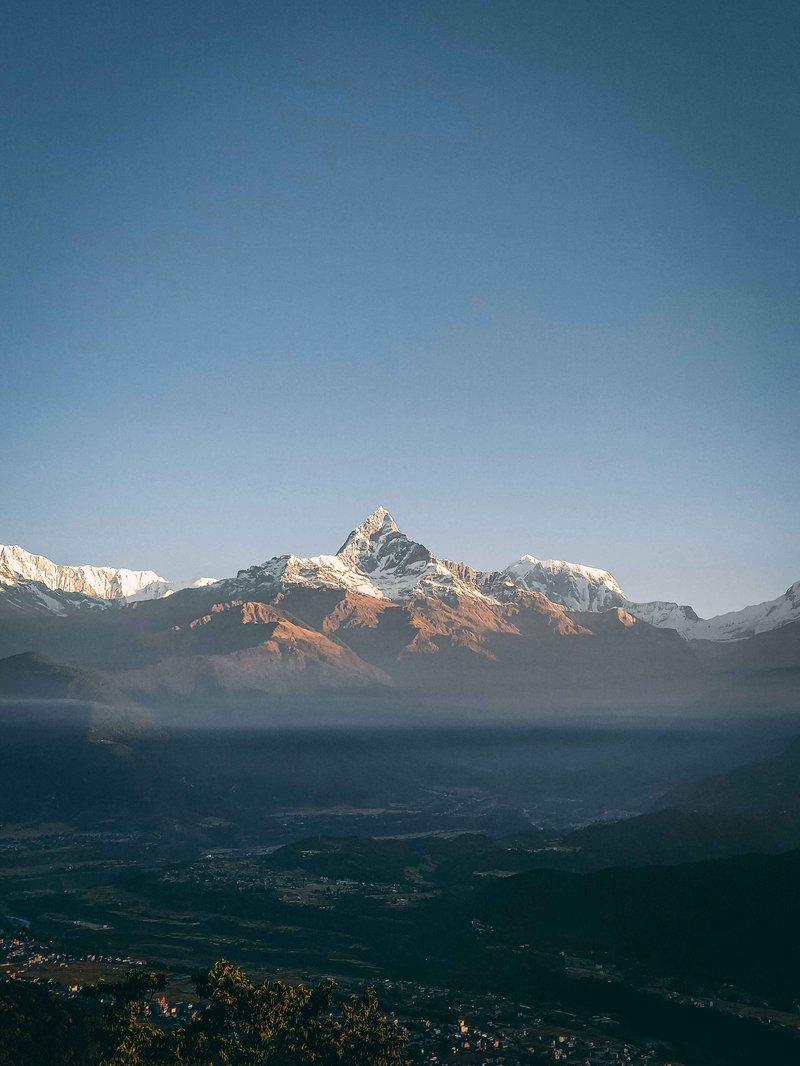
Sarangkot and Pokhara are actively committed to fostering sustainable tourism, ensuring that the region's pristine natural beauty and vibrant local cultures are preserved for future generations.
Visitors are strongly encouraged to minimize their environmental footprint by adhering to the "leave no trace" philosophy: pack out everything that is packed in. This includes actively avoiding single-use plastics by carrying reusable water bottles and opting for purification tablets or filters. Proper waste management is crucial; visitors should collect all litter in a garbage bag and dispose of it responsibly in designated areas once back in the city. Sarangkot itself has implemented various eco-friendly initiatives, including bioengineering projects for slope stabilization, rainwater harvesting systems, and waste management facilities with recycling capacity. This proactive approach demonstrates a genuine commitment to environmental protection. Highlighting these tangible, tech-driven sustainability efforts appeals to a modern, environmentally conscious traveler who seeks destinations actively investing in their ecological future, positioning Sarangkot as a leader in responsible tourism.
Choosing local trekking companies and hiring local guides and porters directly contributes to the local economy, creating jobs and uplifting Himalayan families. This support extends beyond financial transactions; it fosters authentic cultural exchange and ensures that tourism benefits the communities directly. Staying in locally run teahouses and enjoying home-cooked meals also provides direct support to the community. The Sarangkot Religious and Tourism Area Development Committee actively focuses on improving infrastructure and fostering tourism to uplift the local economy. Beyond mere financial transactions, engaging with local guides and porters through reputable agencies ensures fair wages, proper equipment, and ethical treatment. This commitment aligns with international guidelines, such as those from the International Porter Protection Group (IPPG), signifying a profound dedication to equitable tourism practices. This perspective positions Sarangkot not just as a scenic destination but as one committed to social responsibility, attracting travelers who prioritize ethical travel experiences.
Sarangkot and Pokhara are pioneering accessible tourism in Nepal, making the breathtaking Himalayan experience available to a wider demographic. The Kaskikot Accessible Trail, launched in 2018 as Asia's first wheelchair-friendly trekking route, is a 1.24 km wide path suitable for wheelchairs, complete with handrails, accessible toilets, and rest areas. The Pokhara Sarangkot Trail is another dedicated pathway featuring gentle slopes and smooth surfaces, designed specifically for wheelchair users and individuals with limited mobility.
Comprehensive support systems are available, including specialized adaptive trekking equipment (modified wheelchairs, trekking poles with enhanced grip, custom crutches), trained guides and porters (often providing a 1:1 caretaker ratio for personalized assistance), and wheelchair-accessible vehicles for transportation. Many tours are stroller-friendly and offer infant seats, ensuring that families with young children can comfortably participate. The Sarangkot hike itself has no specific age limit, making it suitable for elderly visitors and entire families. Sarangkot's dedication to inclusive tourism, exemplified by Asia's first accessible trekking route, is a groundbreaking initiative. This commitment allows individuals of all physical abilities to experience the majestic Himalayas, challenging the traditional perception of mountain travel as exclusive to the highly fit. This unique selling proposition significantly broadens the market to a previously underserved demographic, positioning Sarangkot as a truly universal and compassionate travel destination.
The sunrise may be the main event, but the magic of Sarangkot and its surrounding Pokhara Valley extends far beyond dawn, offering a rich tapestry of cultural, historical, and adventurous experiences.
Sarangkot is a village steeped in history and vibrant local culture. It once served as the summer capital of Kulmandan Shah, an ancestor of Nepal's Shah dynasty kings, and was a significant site for royal rituals and gatherings. Its very name, "Sarangkot," derives from "Sarun" (a famous shield and sword game) and "Kot" (hilltop), reflecting its past as a strategic and recreational hub. The traditional "Dhaal dance," a special swords game, is still occasionally organized here, connecting visitors to this rich heritage.
Visitors can explore the vibrant local life among the Gurung and Magar ethnic groups, witnessing traditional farming methods and savoring authentic homemade food. The early morning hours at Sarangkot also offer a chance to observe local morning rituals and prayers, adding a profound spiritual dimension to the sunrise experience.
For a truly unique cultural immersion, consider a Tibetan cultural tour. These tours provide authentic insights into Tibetan refugee settlements, allowing visitors to visit Buddhist monasteries, interact with young monks, learn about traditional Tibetan medicine from traditional doctors, witness carpet weaving from raw wool to finished product, and enjoy traditional Tibetan breakfast (butter tea, tsampa) and lunch (momos, thenthuk) while learning about their cultural significance. This level of detail on local folklore and traditions is often missing in quick travel guides, making it a valuable and unique aspect of the Sarangkot experience.
Paragliding: Sarangkot is globally recognized as one of the best places for paragliding, drawing thrill-seekers from around the world. Visitors can experience the exhilarating thrill of soaring above the Pokhara Valley, with breathtaking aerial views of the mountains and Phewa Lake below.
Zip-lining: For those seeking extreme adventure, Sarangkot also offers adrenaline-pumping activities like zip-lining.
Nature Walks & Hikes: For a more grounded experience, Sarangkot provides a network of scenic hiking trails. Visitors can enjoy easy nature walks or embark on longer treks like the Sarangkot Loop Trail. These routes wind through lush forests and charming local villages, offering a chance to connect with local life and nature up close. A hike to the World Peace Pagoda is also a popular option.
After the magic of Sarangkot's sunrise, Pokhara invites visitors to explore its myriad attractions.
Phewa Lake: Enjoy a peaceful boat ride on Phewa Lake, Nepal's second-largest lake, famous for its stunning reflections of Machhapuchhre and the surrounding hills.
Tal Barahi Temple: Visit this unique two-story pagoda-style temple situated on a small island in the middle of Phewa Lake, dedicated to Goddess Barahi.
International Mountain Museum: Gain insights into Nepal's rich mountaineering history, learn about the world's highest peaks, famous climbers, and the diverse cultures of the Himalayan region.
Tibetan Settlements: Explore Tibetan refugee camps, learn about their culture, traditions, and spiritual heritage. This can include traditional Tibetan breakfast, interactions with monks, learning about Buddhist symbols, and visiting carpet-weaving workshops.
Davis Falls (Patale Chhango) & Gupteshwor Mahadev Cave: Witness Davis Falls, a distinctive waterfall where the river plunges into an underground tunnel. Explore the mystical Gupteshwor Mahadev Cave, a sacred Hindu cave temple located just across from Davis Falls, featuring a naturally formed Shiva Lingam and underground views of the waterfall.
Pumdikot Hill & Lord Shiva Statue: A newly popular viewpoint featuring a majestic 51-foot Lord Shiva Statue, one of Nepal's tallest, offering stunning aerial views of Pokhara city and Phewa Lake. It provides a quieter alternative to Sarangkot.
The seamless integration of the Sarangkot sunrise experience with a full day of Pokhara sightseeing is a highly effective tourism strategy. This approach allows visitors to maximize their time, experiencing a diverse range of attractions from natural wonders to cultural sites, thereby increasing the perceived value of their trip and encouraging longer stays. This "combo tour" model contributes significantly to the local economy by encouraging more comprehensive engagement with Pokhara's offerings.
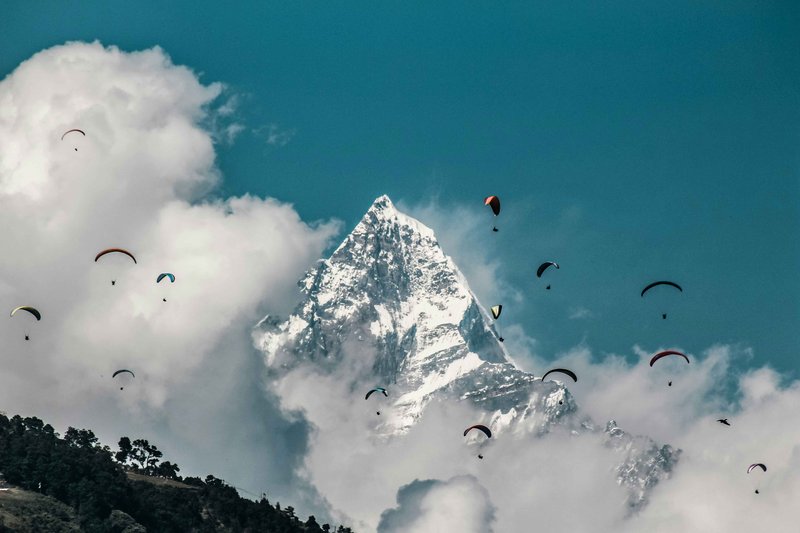
Understanding the unique characteristics of various viewpoints around Pokhara is crucial for travelers to select the experience that best aligns with their preferences. This comparative analysis provides a strategic guide, positioning the article as a definitive resource.
Sarangkot is the most famous and established viewpoint, offering the classic, iconic sunrise experience with scientifically optimal viewing conditions. Consequently, it can become quite crowded, especially during peak seasons and at the main viewpoint.
Pumdikot, located about 11km from Pokhara, offers breathtaking panoramic views of the Annapurna range, Phewa Lake, and the Pokhara Valley, similar in scope to Sarangkot. However, it is relatively lesser-known, providing a quieter and more secluded experience away from the main tourist crowds. A significant highlight of Pumdikot is its majestic 51-foot Lord Shiva Statue, one of Nepal's tallest, adding a profound spiritual dimension to the visit. Pumdikot is ideal for those seeking tranquility, a spiritual experience, and stunning views without the bustling atmosphere of Sarangkot.
Sarangkot is widely recognized as the "best sunrise viewpoint of Pokhara," offering the iconic golden glow on the Himalayan peaks at dawn.
The World Peace Pagoda (Peace Temple), while also offering panoramic views, is predominantly highlighted as the "best sunset point of Pokhara". Perched atop a hill overlooking Phewa Lake, it provides stunning vistas of the Pokhara Valley as the sun dips below the horizon. This clear distinction allows travelers to strategically plan their day, ensuring they capture the optimal light for both sunrise (Sarangkot) and sunset (World Peace Pagoda) from two different, equally stunning locations, maximizing their photographic and experiential opportunities.
Sarangkot offers a direct, accessible sunrise experience with a well-developed tourist infrastructure. Dhampus and Astam are alternative viewpoints that offer similar stunning Himalayan views (Annapurna, Machhapuchhre, Dhaulagiri) but with a focus on cultural immersion in Gurung villages and a generally more relaxed, less crowded atmosphere. Astam is specifically noted as a "lesser-known alternative to Dhampus". These alternatives cater to travelers prioritizing authentic cultural exchange, a quieter trekking experience, and a chance to interact more intimately with local communities, complementing the more popular Sarangkot experience.
Ensuring a smooth and enjoyable trip to Sarangkot involves thoughtful preparation, particularly regarding packing, managing finances, and prioritizing health and safety.
Clothing: Layered clothing is crucial due to the significant temperature difference between chilly early mornings and warmer daytime conditions. This should include moisture-wicking base layers, insulating layers (e.g., fleece or a warm sweater), and a waterproof/windproof outer jacket. A warm hat or beanie and gloves are also highly recommended.
Footwear: Sturdy, comfortable hiking shoes with good grip are essential, especially if planning to hike to the viewpoint.
Hydration: Carrying sufficient water or a reusable bottle with purification tablets is vital to stay hydrated and reduce plastic waste.
Other Essentials: A small day backpack, a camera with extra batteries or a power bank, a headlamp or flashlight for pre-dawn darkness, a basic first aid kit (including bandages, antiseptics, and personal medications), sunscreen, sunglasses, lip balm, tissue/wet wipes, hand sanitizer, and sufficient cash are all advisable. Trekking poles are optional but can provide additional support. For occasional trekkers, renting essential gear like sleeping bags or down jackets in Kathmandu or Pokhara can be a cost-effective alternative to buying. This practical advice caters to budget-conscious travelers and those who don't trek frequently, making the trip more accessible.
Cash is King: While ATMs are available in Kathmandu and Pokhara, they are scarce on the trails and in remote areas like Sarangkot. It is crucial to carry enough Nepali cash (NPR) in smaller denominations for purchases, entrance fees (e.g., NPR 60 for viewpoint entry ), and tips.
INR to NPR: For Indian travelers, Indian Rupee (INR) notes up to 100 are legal tender in Nepal, but larger denominations are banned. The typical exchange rate is around 1 INR = 1.6 NPR. Licensed money exchangers generally offer better rates than hotels.
UPI: Online UPI payments are increasingly possible in Nepal for Indian citizens (up to 1 Lakh INR per day), and QR payment is widespread even in small tea houses. However, for purchases in more remote teahouses on treks, cash is still anticipated to be the primary mode of payment. It is advisable to enable "International Transaction" on your UPI app before travel.
ATM Withdrawals: Indian travelers with an SBI Bank debit card can withdraw up to 35,000 NPR per day from Nepal SBI Bank ATMs, typically incurring a minimum fee of 200 NPR per transaction. Most other Nepali bank ATMs allow a maximum of 25,000 NPR per transaction, with fees up to 700 NPR. It is essential to enable "International Transaction" from your bank's mobile app before your trip.
Wi-Fi & Charging: While Wi-Fi may be available at some teahouses, it often comes with a fee (NPR 200-500, or $2-$5 per day/device) and can be unreliable. Carrying a power bank is highly recommended. A local Nepali SIM card with a data package can provide more consistent connectivity. Nepal's financial landscape is evolving, with UPI gaining traction even in remote areas. However, the trek still largely operates on a cash-first basis, creating a hybrid payment environment. This necessitates a balanced approach: carrying sufficient cash while also being prepared for digital options where available. This prepares travelers for the reality on the ground, preventing frustration and ensuring smooth transactions, particularly for Indian travelers who might rely heavily on UPI.
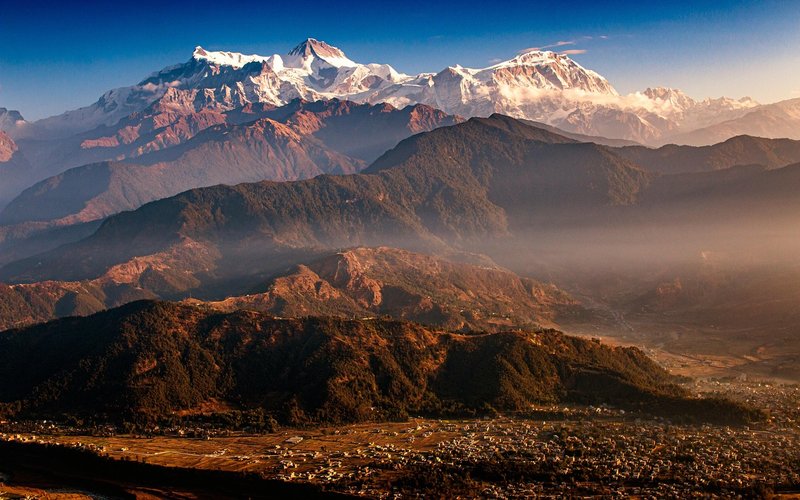
Sarangkot's elevation (1,592m) is generally not high enough to cause acute mountain sickness (AMS) for most individuals. However, staying well-hydrated is crucial for any physical activity.
For longer treks in the Annapurna region, AMS is a significant concern. Prevention involves gradual ascent, incorporating acclimatization days (e.g., in Manang), maintaining high hydration (3-4 liters of water daily), avoiding alcohol and caffeine, and consuming light, carbohydrate-rich meals. The principle of "climb high, sleep low" is a core safety strategy.
It is vital to recognize early symptoms of AMS. For mild symptoms, rest and hydrate. For moderate symptoms, a descent of 300-500 meters is recommended. For severe symptoms, immediate descent is crucial, and medical attention or helicopter evacuation should be sought.
Travel Insurance: Comprehensive travel insurance is highly recommended, particularly for high-altitude trekking. It should cover emergency evacuation (up to 6,000m), medical coverage, and trip delays or cancellations. Many standard policies do not cover elevations above 4,000 meters, so it is essential to verify coverage.
Emergency Funds: Carrying an emergency fund of at least $200-$300 in cash is advisable for unexpected medical needs or early returns.
General Safety: Adhere to marked trails, avoid trekking after dark, exercise caution with strangers offering unsolicited services, and keep valuables secure. Nepal's trekking community emphasizes a proactive safety culture, particularly regarding altitude sickness. This includes not just reactive measures but extensive preventative advice and the critical importance of listening to one's body and descending when necessary. This reassures potential trekkers about the seriousness with which safety is approached, potentially encouraging more visitors.
Sarangkot offers a unique and profound blend of natural beauty, rich cultural depth, and accessible adventure, making it a truly exceptional destination in Nepal. It is a place where the majestic Himalayas paint a new masterpiece with every sunrise, where ancient history whispers through vibrant local traditions, and where modern initiatives are making nature's wonders accessible to all.
Planning a visit to Sarangkot is more than just scheduling a tour; it is an invitation to immerse oneself in a truly unforgettable experience. The breathtaking sunrise, while undoubtedly the highlight, is merely the beginning of a deeper engagement with the region's unique charm. From exploring hidden cultural gems and participating in thrilling adventure sports to simply enjoying the serene beauty of Phewa Lake and the surrounding Pokhara Valley, Sarangkot offers a comprehensive and enriching journey.
.
